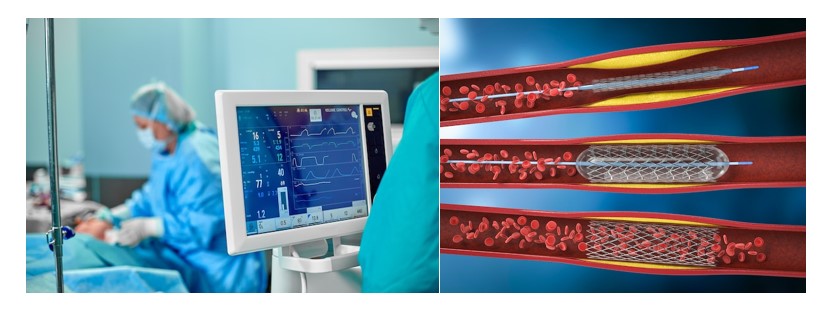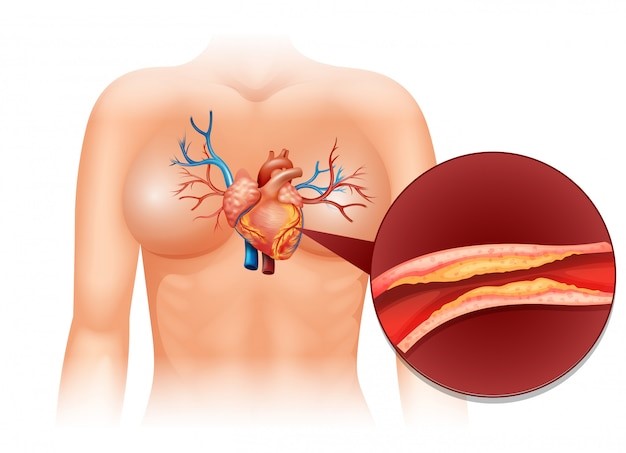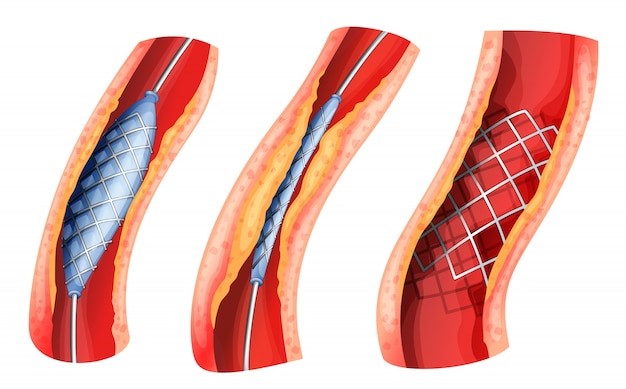
Introduction :
Stents have revolutionized the treatment of coronary artery disease (CAD), providing a minimally invasive solution to restore blood flow to the heart. After stent placement, it is crucial to closely monitor patients to ensure the procedure’s success and prevent complications. This article explores the benefits of using a pocket ECG machine for long-term monitoring after stent placement.

Understanding Stents and their Indications
A stent is a small mesh-like tube made of metal or polymer inserted into a blocked or narrowed artery to restore blood flow. It acts as a scaffold, keeping the artery open and preventing it from re-narrowing. Stents are commonly used in the following conditions:
Coronary Artery Disease (CAD): Stents are primarily used to treat CAD, a condition characterized by a build-up of plaque in the coronary arteries, leading to reduced blood flow to the heart muscle. CAD can cause chest pain (angina) or even a heart attack.

Aortic aneurysm: Aortic aneurysm or dissection is a serious condition involving the weakening or tearing of the aorta, the largest artery in the body. In some cases, a stent may be used to treat this condition.
Other Conditions: Coronary Heart Diseases, congenital Lung Conditions, tumors of the Lungs, Peripheral Artery Disease, and sarcoidosis may require a stent.
Precautions and Preventive Measures After Stent Placement
To ensure the long-term success of stent placement, patients are advised to take certain precautions and preventive measures, including:
Medication Adherence: Following a prescribed medication regimen is crucial. This often includes antiplatelet and anticoagulant medications to prevent blood clots and reduce the risk of stent thrombosis.
Lifestyle Modifications: Adopting a heart-healthy lifestyle is vital. This includes quitting smoking, maintaining a healthy weight, engaging in regular exercise, and following a balanced diet low in saturated and trans fats.
Blood Pressure Management: Monitoring heart health after stent placement is crucial for post-procedure care, and having convenient tools at home can make a significant difference. Keeping Agatsa’s portable ECG Device Health 360 is essential to detect any irregularities in heart rhythm promptly. Additionally, monitoring blood pressure is equally vital, as it helps gauge the effectiveness of the stent and overall cardiovascular health. Agatsa’s Health 360, the Home ECG machine being a combination of a Pocket ECG device and blood pressure monitor by touch, is a must-have device as it empowers individuals to take proactive control of their heart health from the comfort of their homes, promoting early detection and timely intervention whenever needed.

Blood Sugar and Cholesterol Control: For patients with diabetes or high cholesterol, managing these conditions through proper medication, diet, and lifestyle choices is crucial for long-term success.
Regular Follow-ups: Attending scheduled follow-up appointments with the healthcare provider allows for ongoing assessment, adjustment of medications, and monitoring of overall health.
Importance of ECG Before and After Stent Placement

Electrocardiography (ECG) plays a vital role in the assessment of patients before and after stent placement. It provides valuable information about the heart’s electrical activity and can help detect underlying conditions or complications.ECGs are performed:
Before Stent Placement: A 12 Lead ECG machine is essential to evaluate the patient’s heart rhythm and detect any abnormalities that may affect the decision to proceed with stent placement.
After Stent Placement: Post-procedure ECGs help assess the success of stent deployment, identify complications such as stent thrombosis or restenosis (re-narrowing), and monitor the patient’s heart rhythm during the recovery phase.
A portable home ECG monitor proves to be an invaluable device, particularly for individuals who have undergone stent placement and need continuous monitoring of their heart’s electrical activity. In cases of atherosclerosis, where arrhythmias may occur, timely detection becomes critical. With a portable ECG monitor, patients can conveniently obtain ECG reports from the comfort of their homes, allowing for regular monitoring of their heart’s electrical patterns. This continuous monitoring aids in the early detection of any irregularities or potential complications, enabling prompt medical attention and intervention if needed. The convenience and accessibility of a home ECG monitor empower patients to actively participate in their post-stent placement care, fostering better heart health management and enhancing overall well-being.
Factors Contributing to Stent Failure
Stents may fail due to various factors, such as:
- Diabetes and Chronic Kidney Disease (CKD): These conditions can accelerate atherosclerosis and increase the risk of restenosis or stent thrombosis.
- Non-Adherence to Medications: Failure to take prescribed anticoagulation medications or discontinuing statins for cholesterol management can increase the risk of stent failure and neo- atherosclerosis.
- Uncontrolled Blood Pressure: Elevated blood pressure levels can lead to further damage to the arteries, increasing the risk of stent failure.
- Smoking: Smoking is a major risk factor for CAD and can contribute to the development of neointimal hyperplasia, leading to stent re-narrowing.
- Complex Anatomy: Blockages occurring in branched or bent arteries may pose challenges during stent placement, increasing the risk of stent fracture or malposition.

Calcified Blockages: When blockages are calcified and hard, they may require higher pressure balloon inflation during stent placement. This increases the risk of re-narrowing.
Monitoring Stent Health: The Role of ECG

Regular monitoring of patients after stent placement is crucial to identify potential complications and ensure optimal outcomes. Blood tests, including lipid profiles, kidney function tests, and diabetes management markers, can help assess overall health and detect any abnormalities. Additionally, pocket ECG devices offer several advantages for long-term monitoring:
Convenience: Pocket ECG devices are portable, allowing patients to perform ECGs conveniently from the comfort of their homes or on the go.
Early Detection: Regular ECG monitoring can help detect any changes in heart rhythm or signs of stent failure, enabling timely intervention.
Remote Monitoring: Physicians can remotely access and review ECG data, providing real-time feedback and making necessary adjustments to the treatment plan.
Patient Empowerment: Patients become active participants in their own care, as they can track their ECG data and promptly share any concerns with their healthcare providers.
Conclusion
Long-term monitoring after stent placement is crucial to ensure the procedure’s success and prevent complications. Pocket ECG devices offer a convenient and effective means of monitoring heart health, detecting early signs of stent failure, and empowering patients to actively participate in their care. By closely monitoring conditions that may contribute to stent failure, healthcare providers can intervene early and optimize patient outcomes, ultimately improving the quality of life for individuals with stents.
